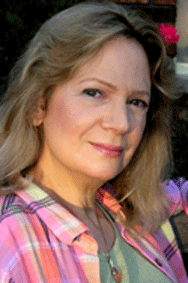Bowker, the company that manages ISBNs and bibliographic information for books published in the U.S., confirmed last October what most of us already knew: self-publishing is on a strong, upward trajectory. Between 2006 and 2011, the number of print and e-books self-published annually jumped an impressive 287%. Of nearly 346,000 print books published in the U.S. in 2011, self-published titles accounted for 43%. In addition, Bowker counted 87,201 self-published e-book titles – not including the many e-books that don't have ISBN numbers.
The availability of self-publishing is good news for writers who are increasingly frustrated by the dwindling opportunities with traditional publishing houses and the limits of small, independent publishers. It's good news for readers who want a broad selection of reading options. It's good for my unique, new Book.ed venture that provides a wide variety of effective, cost-efficient marketing opportunities for authors and others in the publishing community.
In the brief time since Book●ed started inviting authors and editors to submit their published work for a possible review on our weekly webcast (to debut this Spring — visit our website for more information), at least half the books received were self-published. The quality of writing and attention to detail in these books hover between the sublime and the ridiculous. (Cue the haunting whistler.) Here's where I get to The Good, The Bad and The Ugly about self-publishing. Pay attention aspiring authors!
Down every alley and around every corner you'll find a company that would love to publish your work. They'll try to entice you like an internet matchmaking service because they know you'’re hungry for success. Most of us wouldn'’t marry after the first date nor turn our child over to the first nanny that walks through the door, no matter how attractive or affordable they appear to be. So don't casually tie your reputation to a publisher you know nothing about. Don't give away your baby just because someone says they'll make it a star. Don't let fancy clothes or fancy claims corral you into something you'll later regret.
Like Forrest Gump's momma said, “Life is like a box of chocolates. You never know what you're gonna get.” Except that you can get an idea of what you're going to get when you take that big bite out of your wallet to hire a company to publish your book.
Start paying attention to self-published books already on the market. Note the ones that present well, with crisp editing, free of typos and grammatical errors. Check lists of award-winning self-published books and notice the companies that produced them. They are likely to produce a good product for you, too.
Self-publishing used to be referred to as Vanity Press. While their capabilities have advanced, be realistic about what self-publishing can – and cannot – do for you, and be prepared to do your part to achieve success. Most houses offer a range of services; make a list of your priorities: decide what's most important for them to do, what you'’re prepared to pay and what you are capable of taking on yourself.
Remember: Getting your book published may be the final step of your writing journey bit it is just the first step of your journey to being read.

